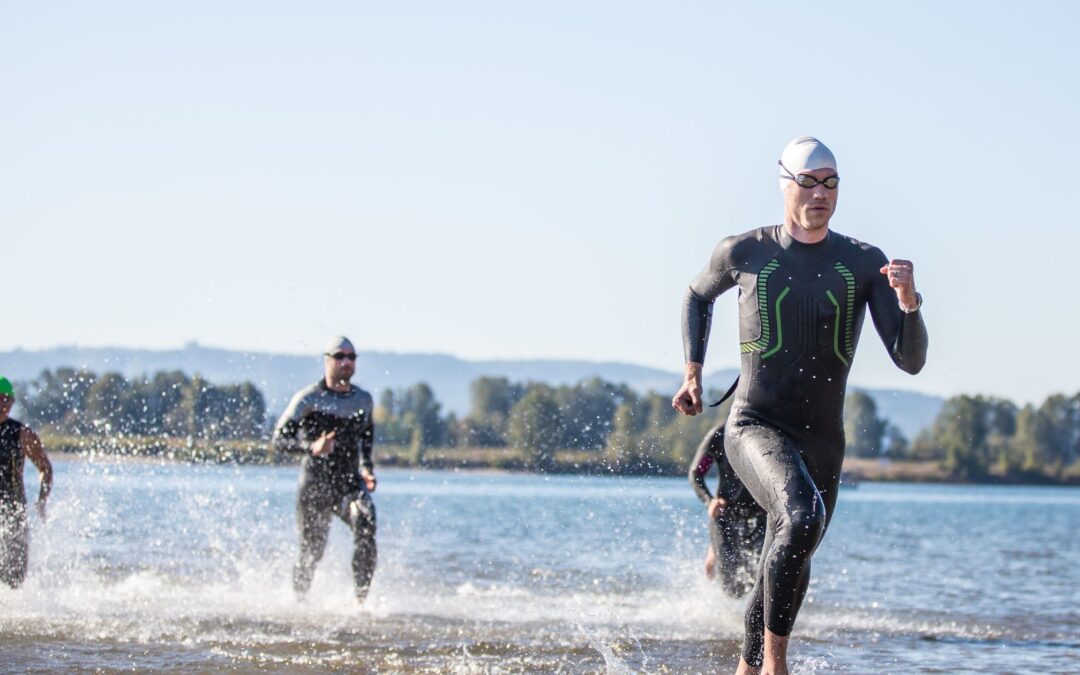Triathlons are unique in their demand for proficiency in swimming, cycling, and running, making them a challenging test of an athlete’s versatility and endurance. One significant factor that can influence triathlon performance is the weather. Understanding how weather conditions impact your race and knowing how to adapt can make a substantial difference in your overall performance. Here’s an in-depth look at how various weather conditions affect triathlon performance and strategies to adapt.
1. Heat and Humidity
Impact: Hot and humid conditions can significantly affect performance, primarily by increasing the risk of dehydration and heat exhaustion. High temperatures elevate body temperature, making it harder to maintain a steady pace without overheating. Humidity further complicates this by impairing the body’s ability to cool itself through sweat evaporation.
Adaptation Strategies:
- Hydration: Start hydrating well before the race and continue throughout. Use electrolyte-rich drinks to replenish lost salts.
- Pacing: Adjust your pace to avoid overheating. Listen to your body and slow down if necessary.
- Clothing: Wear lightweight, moisture-wicking fabrics and consider a hat or visor for sun protection.
- Acclimatization: Train in hot conditions leading up to the race to help your body adapt.
2. Cold Weather
Impact: Cold weather can reduce muscle efficiency and increase the risk of hypothermia, especially during the swim portion. Cold air can make breathing more difficult during cycling and running, potentially leading to respiratory issues.
Adaptation Strategies:
- Layering: Wear layers that you can remove as you warm up. Opt for thermal gear that retains heat but wicks away moisture.
- Warm-Up: Spend extra time warming up to get your muscles ready and to increase your core temperature.
- Breathing Techniques: Practice breathing techniques that can help warm the air before it enters your lungs.
- Nutrition: Consume warm fluids and high-energy foods to keep your energy levels up and maintain body heat.
3. Wind
Impact: Wind can be both a friend and a foe in a triathlon. Headwinds can significantly slow you down and require more energy to overcome, while tailwinds can provide a beneficial push. Crosswinds can be particularly challenging on the bike, affecting balance and control.
Adaptation Strategies:
- Aerodynamics: Use aerodynamic gear and maintain an aero position on the bike to reduce wind resistance.
- Strength Training: Focus on building leg strength to better handle headwinds.
- Route Familiarity: If possible, familiarize yourself with the race course and practice on windy days to develop strategies for dealing with different wind conditions.
4. Rain
Impact: Rain can create slippery surfaces, increasing the risk of falls, especially on the bike. It can also affect visibility and make certain terrains more challenging to navigate.
Adaptation Strategies:
- Gear: Use equipment with good grip, like tires suitable for wet conditions and shoes with excellent traction.
- Visibility: Wear clear or lightly tinted glasses to protect your eyes while maintaining visibility.
- Caution: Slow down and be extra cautious on corners and descents. Avoid puddles that might hide potholes or other hazards.
5. High Altitude
Impact: Racing at high altitude reduces the oxygen available, which can impair endurance and performance. Athletes not accustomed to high altitudes may experience symptoms like shortness of breath and increased heart rate.
Adaptation Strategies:
- Acclimatization: Arrive at the race location several days to weeks in advance to allow your body to adjust to the altitude.
- Hydration and Nutrition: Drink plenty of water and maintain a diet rich in iron to support oxygen transport in the blood.
- Pacing: Start slower than usual and gradually build up your pace as your body adapts.
Conclusion
Weather is an unpredictable yet crucial factor in triathlon performance. By understanding its impact and preparing accordingly, you can optimize your performance and mitigate potential challenges. Training in varied weather conditions, using appropriate gear, and adopting smart strategies will help you adapt and succeed regardless of what the elements throw at you. Remember, preparation and flexibility are key to conquering the triathlon under any weather condition.
